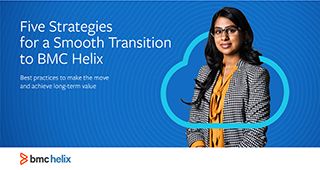I am constantly impressed by the ubiquity of data collection. Video cameras are everywhere. My car collects and transmits data. Supermarket and drug store cash registers record my every purchase. Every click I make online is captured.
Organizations collect all of this valuable data because it provides deep visibility into nearly every aspect of the business: customers, employees, products, supply lines, distribution lines, and more. That visibility improves decision making. Data is also the fuel that propels automation, which delivers the efficiency and speed you need to be successful in the digital economy.
As your organization moves increasingly into cloud technologies such as software as a service (SaaS), it’s essential to implement effective management and protection strategies for the data you store in the cloud. This blog focuses on the business value of data and the implications of SaaS on data management.
Data Promotes Business Success and Innovation
Today’s digital enterprises are aggregating a variety of data types, including:
- Customer data that provides visibility into behaviors, interests, wants, and needs, enabling companies to personalize customer interactions
- Product monitoring data that offers insight into product usage and performance, allowing companies to constantly improve product quality, functionality, and performance
- Inventory data that provides visibility into product velocities, permitting companies to keep shelves stocked with the right products
Organizations that figure out how to transform this data into actionable information and apply it to guide, optimize, and automate actions are the ones that will excel in the digital economy. Many organizations are employing analytics, artificial intelligence (AI), and machine learning (ML) technologies to leverage the massive volumes of data they accumulate.
Here are two real-world examples of how data is transforming business:
- A university implemented intelligent chatbot technology that leverages data gained via tribal knowledge to support students using the university’s wireless network. Although many students work late at night, IT couldn’t justify staffing the service desk 24×7. With the chatbot, the university provides effective support to students 24x7x365.
- A truck manufacturer developed a monitoring system for its vehicles to capture such data points as fuel economy, geographic location, idle time, and potential problems. The company launched a diagnostic service that alerts drivers and fleet managers of impending issues. The service also automatically routes a driver to a nearby service center that has the right parts in stock, minimizing vehicle downtime. Now vehicles spend less time off the road and yield a higher return on investment.
The Questions to Ask
Many organizations are migrating from on-premises apps to SaaS apps to take advantage of rapid implementation, zero upfront capital cost, unprecedented agility, and nearly limitless scalability. Moving to SaaS involves moving data from the legacy infrastructure to the cloud. The additional benefits are compelling in that the SaaS vendor can take over critical aspects of data management, which include monitoring database health for reliability and securing the data.
Moving data to the cloud to support SaaS apps, however, requires careful planning because it raises issues you don’t encounter with on-premises apps. To address these issues, you need to answer the following five questions.
1. What data do you move to the cloud?
Don’t think of the data surrounding an on-premises app as a monolithic entity that you need to move in total to the cloud to support the SaaS app. Doing so might drive up costs unnecessarily. Instead, consider implementing a hybrid model in which you segment the data into a portion that must reside in the cloud and a portion that remains on premises.
As part of this endeavor, examine the data access and archive requirements for your applications. For example, due to industry standards or corporate policy, you may be retaining five years of historical data online within an on-premises app. You may find, however, that two years of online historical data is enough as long as you archive the remaining three years of data and keep it offline and on premises. By minimizing the amount of online data in the cloud, you can reduce your data storage costs.
2. Are you taking into account the dynamic scalability of the SaaS environment?
On-premises apps and SaaS apps differ in their ability to handle data volumes. The on-premises environment has operational constraints on scalability whereas the SaaS environment offers the flexibility to dynamically scale, allowing for data analytics across much larger data volumes. Consequently, when you plan your data storage requirements, take the scalability difference into account.
3. Are there integration implications?
It’s likely that you will decide to keep some data on premises. For example, data sources are often shared by multiple business systems. Moving data to the cloud to support a SaaS app could interfere with accessibility to that data by on-premises applications. In addition, compliance with corporate policies or government regulations may mandate that certain data remain on premises.
In cases like this, you may need to integrate the SaaS app with on-premises data. If so, be sure to thoroughly re-evaluate long-term integrations and document new integrations with the SaaS application to maintain transparency about what on-premises data the SaaS app can access.
4. What are the security implications?
For SaaS vendors, exceptionally strong security is a mandate, so they make hefty investments in safeguarding client data. Their emphasis on security means that vendor security is often substantially stronger than that of their customers.
However, factors such as corporate security policies and government regulations may require that certain data remain on premises. As a result, you need to decide what data you can safely move to the cloud and what data must remain on premises for security or legal reasons.
5. How do you track costs?
Data volume is related to usage. In general, the higher the usage, the larger the data volume and the higher the cost. Consequently, you need to track usage to understand data growth. If the data is delivering results in the form of business success, the investment is worthwhile. In any case, however, tracking usage eliminates surprises at invoice time, optimizes costs, and more accurately forecasts future needs.
Move with Confidence
By getting answers to these questions, you can move to SaaS with confidence. As a result, you’ll enjoy the significant advantages of SaaS while protecting one of your most valuable assets: your data.
If you need assistance with your transition to SaaS, please fill out our form and a BMC Customer Success expert will reach out to get started.
Five Strategies for a Smooth Transition to BMC Helix
These postings are my own and do not necessarily represent BMC's position, strategies, or opinion.
See an error or have a suggestion? Please let us know by emailing blogs@bmc.com.







